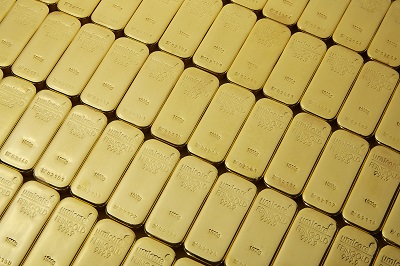Gold imports & gold reserves: an international comparison
Gold facts & figures Arnulf Hinkel, financial journalist – 17.06.2021
What are the top gold importing countries and what is the gold used for? Which nation has the largest national gold reserves and what purposes do they serve?
 Gold is popular across the entire world, and, depending on the country, the reasons are as varied as the use of the precious metal. The respective priorities at the time, which also vary depending on the social conditions, are equally influential factors as a nation’s history and traditions. The mere fact that gold is imported reveals nothing about what the precious metal is used for, and there is a wealth of possibilities. It serves as an important raw material for the production of jewellery and is also, to a lesser extent, used in the chemical and electronics industries as well as in medicine, where it serves as an indispensable raw material and active ingredient. Gold is, of course, also an attractive investment, in the form of bars or coins, for individual investors as well as for backing gold funds and ETCs. They provide all the advantages of securities trading, albeit with a low default risk. Another reason speaking for gold imports: national gold reserves. How do these various levels of demand affect the respective country’s import behaviour? And which other factors can play a central role in gold imports?
Gold is popular across the entire world, and, depending on the country, the reasons are as varied as the use of the precious metal. The respective priorities at the time, which also vary depending on the social conditions, are equally influential factors as a nation’s history and traditions. The mere fact that gold is imported reveals nothing about what the precious metal is used for, and there is a wealth of possibilities. It serves as an important raw material for the production of jewellery and is also, to a lesser extent, used in the chemical and electronics industries as well as in medicine, where it serves as an indispensable raw material and active ingredient. Gold is, of course, also an attractive investment, in the form of bars or coins, for individual investors as well as for backing gold funds and ETCs. They provide all the advantages of securities trading, albeit with a low default risk. Another reason speaking for gold imports: national gold reserves. How do these various levels of demand affect the respective country’s import behaviour? And which other factors can play a central role in gold imports?
The world’s top six gold importers
Gold imports are often listed internationally in US dollars rather than in tonnes by weight, so as not to inadvertently compare apples with oranges. While most countries import fine gold, some also opt for large amounts of doré gold, a type of raw gold made from gold ore, for further processing in their own refineries. The collection of global comparable data is complicated, due to numerous national peculiarities, and countries’ individual rankings can vary from year to year. The ranking of gold-importing countries presented here refers to the year 2019, for which reliable figures are available.
First place: the UK with 23.1 per cent of all gold imports
 The former Empire has traditionally been closely associated with international gold trade. To this day, the London Bullion Market is the most important OTC trading venue for gold. International London gold trade dates back to the 17th century, and to this day, the globally valid wholesale price for fine gold is determined via LBMA gold fixing, which was introduced in 1919.
The former Empire has traditionally been closely associated with international gold trade. To this day, the London Bullion Market is the most important OTC trading venue for gold. International London gold trade dates back to the 17th century, and to this day, the globally valid wholesale price for fine gold is determined via LBMA gold fixing, which was introduced in 1919.
Another important reason for the US$70.9 billion worth of British gold imports is the tradition of many central banks to store part of their gold reserves at the Bank of England. In addition, major gold funds and institutional investors store large amounts of gold at so-called bullion banks. Last but not least, the fact that gold is regarded as a safe haven investment has caused imports to the UK to rise in recent years – not least due to Brexit.
Switzerland ranks second with 19.8 per cent of all gold imports
Like the UK, Switzerland is an international transhipment centre for gold. Popular as a discreet storage location, both among both private and institutional investors, it also has the largest capacities for processing gold, with four of the world’s five largest gold refineries. Gold worth US$60.7 billion was imported in 2019.
The bronze metal goes to China with gold imports of over US$43.9 billion
For many years, the Peoples Republic ranked highest in terms of gold demand, both on the part of the state and by private investors. China is, however, not the top gold importer for the simple reason that it is the world’s largest producer of the precious metal. Gold jewellery is traditionally in high demand all across Asia, and the popularity of physically backed gold ETFs, which were introduced in China only a few years ago, is rising. China was responsible for 14.3 per cent of all gold imports in 2019.
India ranks fourth with a market share of 10.5 per cent
Despite tight regulation, India comes in fourth with gold imports worth US$ 32.2 billion. Here, the precious metal is primarily in demand by jewellery producers and private consumers. The Indian government is trying to limit imports through various measures in order to eliminate the risk of gold becoming a competing, more stable alternative to the national currency. The precious metal traditionally plays an extremely important role in India, especially during the wedding season.
Hong Kong fifth-largest gold importer at US$14 billion
The special administrative region and metropolis on China’s southern coast accounts for 4.6 per cent of all gold imports, with a demand structure very similar to mainland China’s. It differs in the fact that around 65 per cent of the imported gold is marketed onwards to the mainland.
Sixth-largest gold importer: Turkey with 3.7 per cent market share
In Turkey, gold is traditionally highly sought after in the form of jewellery or coins. Since the beginning of the economic crisis and the depreciation of the lira, the demand for gold has increased strongly from both the state and the private sector. While the Turkish central bank has increased its gold reserves more than six-fold within just four years, the precious metal is threatening to become an unofficial second currency in Turkey. From 2015 to 2019, gold imports to Turkey increased by 227.8 per cent to an equivalent of US$11.2 billion.
Germany, where the precious metal is primarily regarded as an investment, only ranked 14th among gold importers in 2019. However, the Federal Republic has been the country with the highest per capita ownership of gold for several years.
It all comes down to net gold imports
 A country’s level of demand for gold to cover state, consumer, investor and industry needs can only be determined by offsetting gold imports with gold exports. The two leading nations in terms of gold imports, Great Britain and Switzerland, are also world champions in its export. In the latter, the imported doré gold is processed to be subsequently and in large parts exported as fine gold. Between 1,000 and 2,000 tonnes are thus usually imported and mostly re-exported every year, with quantities varying greatly from year to year. In the UK, where foreign trade plays a crucial role in overall gold trading, import and export quantities fluctuate even more. In addition to jewellers’ wholesale demand, that of the largest gold ETCs must also be met. The US, ranking 8th among gold importing nations, was also a net exporter in 2019. Most other countries are net importers, especially noticeable in recent years in a gold price rally that went almost unchecked until August 2020 and apparent in a positive gold trade balance. Due to the rising gold price, the value of national gold reserves also gained significantly.
A country’s level of demand for gold to cover state, consumer, investor and industry needs can only be determined by offsetting gold imports with gold exports. The two leading nations in terms of gold imports, Great Britain and Switzerland, are also world champions in its export. In the latter, the imported doré gold is processed to be subsequently and in large parts exported as fine gold. Between 1,000 and 2,000 tonnes are thus usually imported and mostly re-exported every year, with quantities varying greatly from year to year. In the UK, where foreign trade plays a crucial role in overall gold trading, import and export quantities fluctuate even more. In addition to jewellers’ wholesale demand, that of the largest gold ETCs must also be met. The US, ranking 8th among gold importing nations, was also a net exporter in 2019. Most other countries are net importers, especially noticeable in recent years in a gold price rally that went almost unchecked until August 2020 and apparent in a positive gold trade balance. Due to the rising gold price, the value of national gold reserves also gained significantly.
Gold reserves – balancing risk and ensuring solvency
The government’s share of gold imports becomes part of the respective national foreign currency reserves, intended to ensure that a central bank has sufficient liquidity to conduct foreign exchange transactions. Part of these reserves traditionally consists of the official reserve currency US dollar. In recent decades, they also came to include other important, stable currencies such as the Swiss franc, euro and renminbi. Gold plays a special role in foreign currency reserves. As a means of payment independent of currency and financial system, the national gold reserve serves as a hedge against fluctuations in the value of the US dollar in times of economic stability. In times of crisis, gold reserves ensure a country’s liquidity by providing effective protection against default in the event of a devaluation of the respective currency, thus supporting a nation’s financial independence. Over many centuries, the precious metal has proven ideal in this function. National gold reserves’ volume depends, among other things, on the respective country’s economic situation. Historical developments and events also play a major role, such as the introduction and end of the Bretton Woods system following WWII, as a collective foreign currency exchange system that required a currency peg to the US dollar which was in turn pegged to the price of gold. The gold price against the US currency, normally actually influenced by a variety of factors, was thus fixed at US$35 per ounce for decades.
The six countries with the largest gold reserves
According to official data from March 2021, the following countries hold the largest gold reserves:
1. United States With 8,133.5 tonnes of gold in the vaults of the Fed and the United States Bullion Depository (also called “Fort Knox”), the US not only holds the largest gold reserves in the world, but also accounts for 77.5 per cent of total reserves, the highest share held by any nation in terms of foreign currency reserves.
With 8,133.5 tonnes of gold in the vaults of the Fed and the United States Bullion Depository (also called “Fort Knox”), the US not only holds the largest gold reserves in the world, but also accounts for 77.5 per cent of total reserves, the highest share held by any nation in terms of foreign currency reserves.
2. Germany
Germany follows at some distance with 3,362.4 tonnes and a comparatively high share of gold in its total reserves of 74.5 per cent.
3. Italy
The eurozone states in general hold a large share of gold reserves at 59.1 per cent. Italy significantly surpasses this average with 69.3 per cent and the third-largest gold reserves worldwide of 2,451.8 tonnes.
4. France
La Grande Nation is almost on a par with 2,436.1 tonnes of gold reserves, accounting for 64.5 per cent of its total reserves and thus also ranging above the European average.
5. Russia
A relative newcomer among the upper echelons, Russia has more than doubled its gold reserves since 2012 and currently holds 2,295.4 tonnes of gold. Compared to the US and the eurozone, this is a significantly smaller share of its total foreign currency reserves at only 22 per cent.
6. China
As one of the leading economic powers, the People’s Republic was overtaken by Russia in 2018, but this says little about China’s foreign currency reserves. In fact, the country’s 1,948.3 tonnes of gold reserves account for only 3.3 of its total reserves.
Worldwide, 35,218.6 tonnes of gold are stored in central banks’ vaults, of which 10,772.2 tonnes are held within the eurozone.
Universal liquidity reserve
The advantages of national gold reserves in principle also apply to the non-governmental sector; the precious metal serves private and institutional investors as a hedge against inflation and as a liquidity reserve in times of crisis. Its qualities in terms of portfolio diversification and portfolio stabilisation are popular with investors of all stripes. At the end of 2020, a total of 1,773.2 tonnes of gold were therefore in circulation for investment purposes alone. Thereof, 896.1 tonnes were accounted for by gold bars and coins (mainly purchased by private investors), while a further 877 tonnes served to physically back gold ETFs and ETCs, sought by both private and institutional investors.
Arnulf Hinkel
Finance journalist
Xetra-Gold Hotline

Do you have questions? We have the answers. Contact us here: 9 a.m.–6 p.m. CET
xetra-gold(at)deutsche-boerse.com
For press inquiries: media-relations(at)deutsche-boerse.com




